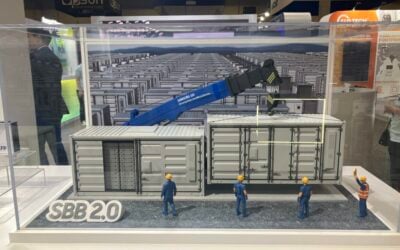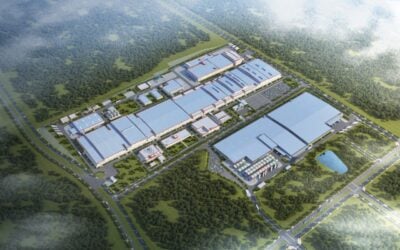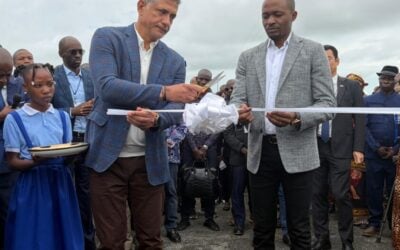
Key contracts have been signed for the first-ever grid-scale battery storage project in Namibia, signifying the African country’s dedication to modernising its energy infrastructure, according to a top local official.
Engineering, procurement and construction (EPC) contracts were signed today (13 December), between national electric utility Namibia Power Corporation (NamPower) with Shandong Electrical, Engineering & Equipment Group (SDEE) and battery manufacturer-integrator Narada Power.
A joint venture (JV) between the two Chinese companies will deliver the 54MW/54MWh Ombuu battery energy storage system (BESS) project in Namibia’s Erongo Region, at the existing Omburu Substation. Construction is expected to take around 18 months for the project to come online in the latter part of 2025.
At a signing ceremony for the EPC contract, Wilhencia Uiras, executive director of Namibia’s National Planning Commission said the battery storage project represented a “crucial step” towards “embracing innovative and eco-friendly solutions”.
Try Premium for just $1
- Full premium access for the first month at only $1
- Converts to an annual rate after 30 days unless cancelled
- Cancel anytime during the trial period
Premium Benefits
- Expert industry analysis and interviews
- Digital access to PV Tech Power journal
- Exclusive event discounts
Or get the full Premium subscription right away
Or continue reading this article for free
“This project not only signifies our dedication to modernising our energy infrastructure but also underscores our responsibility towards future generations,” Uiras said.
As reported by Energy-Storage.news in December 2021, the Omburu BESS project is supported by a €20 million (US$21.58 million) grant from the German government through national development bank KfW. That represents about 80% of the total cost, with NamPower financing the remainder.
According to a fact sheet produced by NamPower and KfW, the BESS will store surplus renewable generation as well as electricity imports from the Southern African Power Pool (SAPP) to supply electricity at peak times and offset the use of the local Van Eck coal power plant.
In addition to providing local grid stability services, the BESS will enable Namibia to trade energy more effectively in the SAPP and reduce the country’s need to make expensive emergency imports from the Eskom grid in South Africa.
BESS to reduce reliance on burning coal and importing electricity
Namibia currently imports up to 70% of its electricity from neighbours, predominantly generated by coal. Against that backdrop, the country is targeting renewables to be 70% of the generation mix by 2030, more than double the 30% it is today. It is also targeting domestically-produced energy to represent an 80% share by the end of this decade.
That expansion of renewables, which will include 100MW of generation NamPower itself intends to add to the grid by 2025, and a further 500MW of solar and wind which could come from liberalisation of the energy market, means there will be a growing need for energy storage to balance fluctuations in supply and demand.
The BESS will use Narada Power’s lithium iron phosphate (LFP) cells, and will perform a number of ‘stacked’ applications: peak shifting, energy arbitrage, emergency backup power, ramp-rate control and reactive power control. Peak shifting will be the main use case, with the applications stacked in order of priority so that the system performs the most economically valuable service at any given time.
NamPower will develop, own and operate the Omburu BESS, and it is hoped that as a first-of-its-kind project in Namibia, it will provide benefits for subsequent projects that follow.
The NamPower-KfW report noted that while it is largely grant-funded, economic modelling was carried out which found that in power terms, the BESS could provide ancillary services to the grid much cheaper than is currently done through NamPower’s Van Eck and Anixas power plants and Eskom imports. Meanwhile, energy from the BESS would be cheaper than current NamPower tariffs and energy imported via SAPP.
It also has further economic benefits in reducing congestion on existing transmission infrastructure, which could alleviate the need for costly grid upgrades, and a reduction in the hours the Van Eck coal plant runs will also bring down power costs in the region.
At recent COP28 climate talks, a group of 11 countries, including eight from Africa, signed up to a new global effort to deploy 5GW of energy storage in low- and middle-income nations, as a means of reducing energy poverty.





